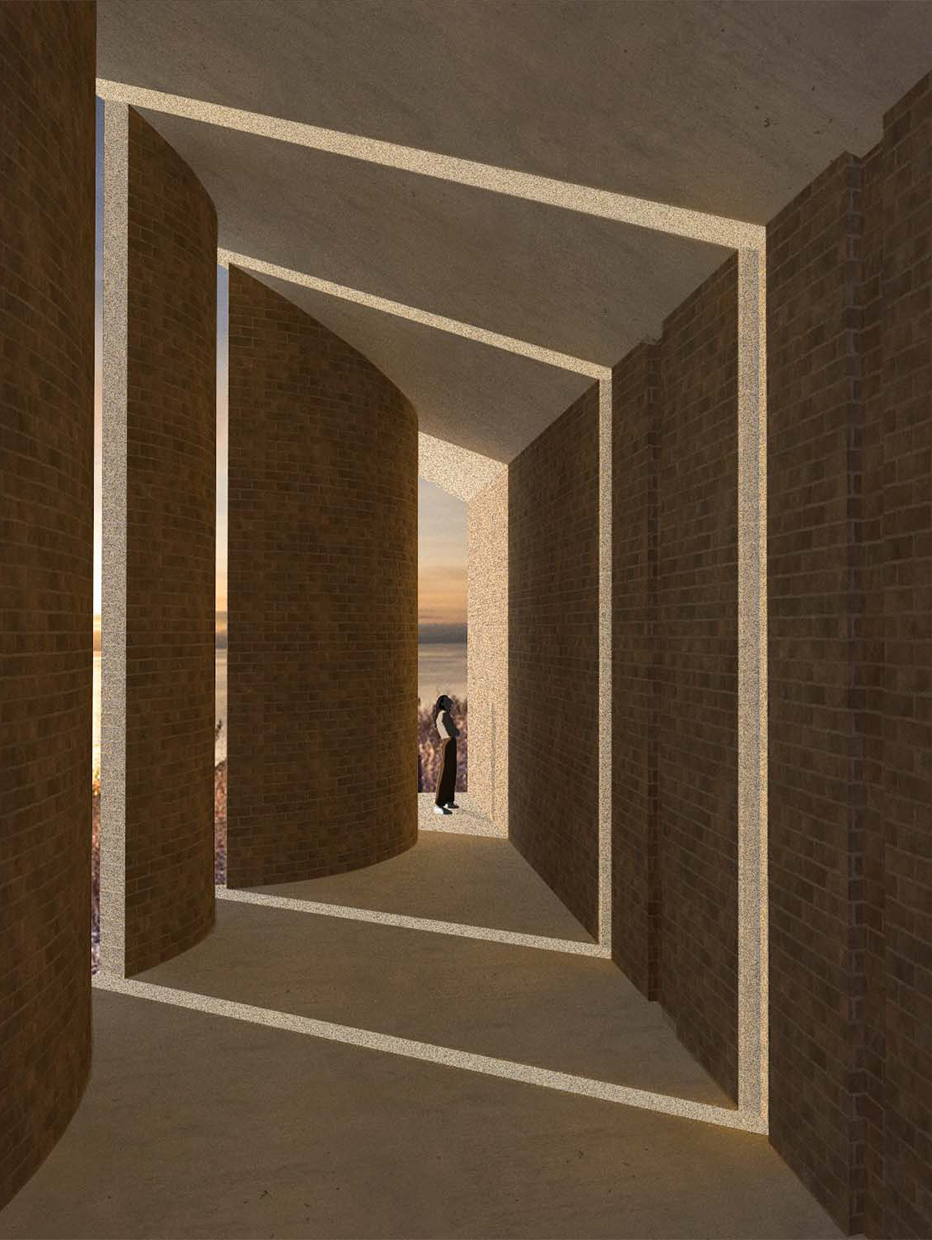Path through light - a pavilion of light and time

Category
Daylight in buildings - Region 1: Western Europe.
Students
Hanna Leppänen
School
Metropolia University of Applied Sciences
Country
Finland
Download
Download ↓
The north wall of the pavilion is parallel with the west-east axis, while the southern walls are aligned according to the angle of the sun at the changes of meteorological seasons. This means that the light condition inside varies according to the time of day and year.
The astronomical seasons are based on the position of Earth in relation to the sun. The earth’s tilted axis impacts the amount of sunlight we get throughout the year. This creates the astronomical seasons, which include two solstices and two equinoxes. A solstice occurs when the earth’s axis tilts either away from the sun or towards it. In the northern hemisphere the winter solstice is the shortest day of the year, whereas the summer solstice is the longest. A solar equinox is the moment when the sun appears directly above the Earth’s equator, meaning that both day and night are at a balance.
The winter solstice has been celebrated as the “sun’s rebirth”, as the start of a new beginning. The word “solstice” derives from the Latin word sōlstitium and translates to “sun stands still.” The pavilion captures this phenomenon. For a moment, the sunlight stands still inside the pavilion as the light of winter creates a gateway through the shadowy space.
On the day of the equinox the sun appears to rise “due east” and set “due west”. As the sun rises and sets at the time of an equinox, its light creates a path through the pavilion.

































